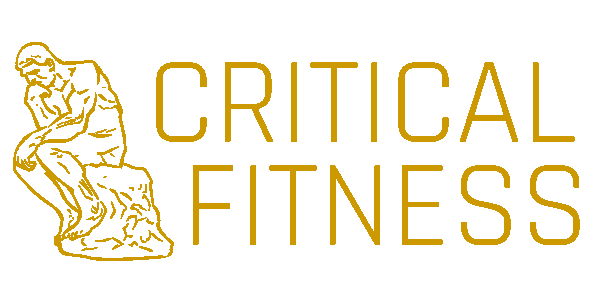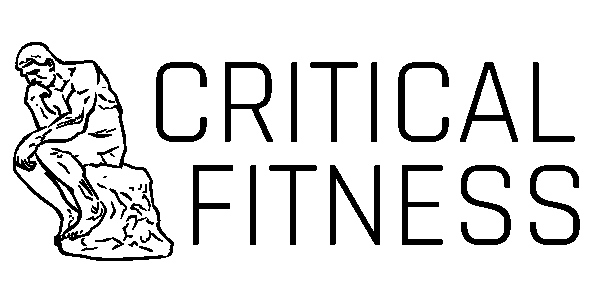I’ve seen lots of conversation lately about treating, and reducing your risk of catching, COVID-19. But I see less about how to get your life back to normal. Particularly your exercise.
Once you’ve been sick, and recovered, how quickly should you get back into training? How hard should you train? Are there any risks associated with exercise? And how can long COVID-19 effect your exercise?
These are some of the questions we are going to explore in this article.
A couple of things to clear up first
There was a lot of misinformation around about COVID-19. Some peopled doubted it even existed (and some still do). Others doubted how bad it is. Others doubted death tolls, medical treatments, and the importance of vaccination, though much of this has died down as public health measures have been relaxed.

These people could even be under-educated, over-confident fitness professionals, who drastically overstate the benefits of exercise in reducing your illness risk. The fact is, we are talking about recovery from a potentially severe respiratory illness. And vaccination can reduce the likelihood of you getting this illness, and it’s severity.
We have a healthy appreciation for expertise here at Critical Fitness. So if you would like to argue against any of the conclusions we draw from this article, feel free… as long as your arguments are good ones! If not, or if you’re straying outside the scope of your expertise, then jog on.
What is COVID-19?
Just in case you’ve been living under a rock the last couple of years, here is a refresher. COVID-19 is a respiratory infection, from the same family of illnesses as the common cold.
We transmit it through respiratory droplets and close contact. And as we’ve found out in the last couple of years, it spreads easily.

Symptoms commonly include a fever, coughing, sore throat, and shortness of breath. You may also experience a runny or congested nose, headaches, fatigue, muscle and joint pain, diarrhoea, vomiting, and an altered sense of taste and smell.
Those with a more severe illness may develop pneumonia, cardiac injury, and be susceptible to secondary infections. So while shares some similarities with the common cold, it can be a lot more serious.
Why don’t we just exercise so we don’t get COVID-19 at all?
You can’t do that. Don’t listen to people that overstate the benefit of exercise, like the personal trainers I mentioned above.
There’s no doubt regular exercise is good for you, for a lot of reasons. And when we do regular, moderate exercise, we have better immune function than when we don’t exercise at all. But that won’t stop you getting sick, it will just reduce your chances a bit.

And one thing many advocates of exercise don’t mention is sometimes it can increase your risk of illness. Exercise can be associated with reduced immune function too, at higher levels. There’s a sweet spot we need to reach, that is different for all of us.
But people with a strong bias towards exercise will overstate these benefits, and neglect to mention any potential downside. * Be wary of where you get your advice from.
How can COVID-19 affect our ability to exercise?
This will depend on how severe your illness is. People experience different symptoms. And there are milder and more serious variants of the disease (I write this as the Omicron variant gets a foothold in my town for the first time).
You may experience very mild symptoms, or if you are lucky, no symptoms at all, though you may still spread the disease to others.
COVID-19 impacts both our heart and lungs in ways that will affect our exercise:
Cardiac effects
When suffering flu-like symptoms from the illness, cardiac inflammation is common. And if you are unlucky enough to be hospitalised, you may suffer cardiac myocyte necrosis (the death of heart muscle cells).
Maybe because of this damage to the heart, there is a significantly increased risk of heart attack among those who have suffered from COVID-19.
We may also see impairment in the ventricles of the heart, that may reduce the amount of oxygen delivered to exercising muscles. And our ability to deliver oxygen from our lungs to exercising muscle via the heart and bloodstream is a major limiting factor in our exercise ability!
Respiratory effects
Most people experience coughing and shortness of breath when they get COVID-19, similar to colds and flus.

Some people experience a persistent cough, and laboured breathing, for up to four weeks following infection. This breathlessness, especially when combined with chest pain, may be the result of pulmonary embolism, another reason to be cautious after severe bouts of illness.
And those with exercise-induced asthma, or other respiratory conditions, should be more cautious as well, as they already have a condition that can restrict their airway. Combined with persistent COVID-19 symptoms, their return to exercise may be even more difficult.
And while we are still learning more about COVID-19 all the time, we can base some of our expectations on other, similar illnesses. Sufferers of these illnesses have reduced aerobic capacity for up to 12 months following infection.
Long-COVID & exercise
Estimates I’ve seen about long-COVID vary, which you’d expected for a disease we’ve only just identified!
Research suggests that 10% of all patients, or up to 39% of symptomatic patients report some residual symptoms after more than 6 months. Persistent fatigue is the most common reported symptom. So our exercise may be reduced for a long time, not just the time we have symptoms.
And it’s not just older, unfit, or overweight people who must worry about long-COVID. Elite athletes recovering from the illness report this too.

Research has now shown that those with long-COVID have lower aerobic capacities, and report symptoms of their illness during graded exercise testing. How long will this last? We’re not sure yet!
How careful should I be restarting my exercise program?
In a word, very!
A review in 2020 recommended a week of light muscle strengthening in your return to exercise, before starting cardio exercise.
And the American College of Sports Medicine says you should be free of symptoms for at least a week, before you start light to moderate intensity exercise as tolerated.
They recommend you get a medical clearance to exercise if you were hospitalised. And if you had more severe respiratory symptoms, but weren’t hospitalised, you should seek a medical clearance before attempting higher intensities of aerobic exercise.
When you do restart your exercise, you should be cautious about the volume you attempt at first. Begin at about 25% of your pre-illness levels (that could be distance, weight lifted, etc.) for a week, and see how you feel. If you don’t experience your symptoms returning or getting worse, then you can progress a little further.
I know, it’s slow! But lots of people make the mistake of increasing exercise too quickly. That’s how lots of injuries happen. It’s better to be a little slow than a little fast.
How else could COVID-19 effect my exercise?

Some just published research highlighted changes in running gait following illness with COVID-19.
The researchers found changes in ground reaction force in runners following their illness, which indicated that these runners were reaching peak force when accepting their weight faster, which is associated with increased injury risk.
There were also changes in muscle activation in their legs, which may have been an attempt to reduce this force up the limb.
Why was this happening? The authors didn’t draw any conclusions. And the control group they compared against were active runners (doing about 17km per week, on average).
It’s unlikely that COVID-19 directly changes the way you run, of course! But what could change the way you run, and increase your injury risk, is the period of inactivity associated with having COVID-19!
It’s just another reason you should be cautious about the rate you progress your exercise. You would much rather hold yourself back than get a stress fracture, and not be able to run comfortably at all!
But the good thing is, there doesn’t appear to be any negative effects of a careful, progressive increase in exercise intensity, under supervision. And in addition to improved fitness levels, we also see improvements in fatigue and cognition.
You should be more cautious if you have persistent symptoms,. Follow medical advice, but you may need tests like an ECG to make sure you aren’t suffering from myocarditis. If you are still ill, and begin exercising too quickly, you may compromise your recovery, and you will certainly compromise your exercise.
Can my personal trainer supervise my exercise?
That’s an interesting question! The scope of practice for personal trainers allows us to train low risk clients without supervision. A relatively young person, recovering from COVID, without other complications, would fall into this category.
But those with other conditions would be considered high risk, and need a medical clearance to begin exercising, and possibly supervision from a more qualified exercise professional.
Your personal trainer should be open to collaborating with, and referring to, these more qualified professionals. If they aren’t, or are comfortable exceeding their scope of practice, I’d be looking for a new trainer!
In Summary
Be careful with your return to exercise if you’ve been symptomatic with COVID-19. It may be slower than you think.
Even better, do what you can to avoid the illness in the first place. Keep yourself away from other people where you can. And get vaccinated!
* to be fair, I have a strong bias towards exercise too. I’m just trained to recognise by biases, and try to account for them as well as I can.
Edit History
22/12/2022 – The original version of this article was published in January 2022. The introduction was modified in December 2022, to reflect the change in the public health response to the virus throughout the year.



Recent Comments